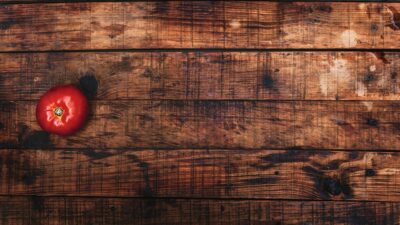In today’s fast-paced world, we often find ourselves searching for quick solutions to our meal dilemmas. However, cooking healthy meals doesn’t have to be a bland experience. In fact, one of the best ways to enhance the appeal of our food is through the use of color. A vibrant plate not only pleases the eye but also signifies a variety of nutrients that our bodies crave.
The Science of Color in Food
We’ve all heard the phrase, “Eat the rainbow,” and there’s substantial truth behind it. Different colors in fruits and vegetables indicate the presence of various vitamins, minerals, and antioxidants. For instance:
- Red: Tomatoes, strawberries, and red bell peppers are high in lycopene and anthocyanins, which support heart health.
- Orange/Yellow: Carrots, sweet potatoes, and mangoes are rich in beta-carotene, promoting good vision and immune function.
- Green: Spinach, kale, and broccoli are loaded with vitamin K, folate, and fiber, essential for bone health and digestion.
- Blue/Purple: Blueberries, eggplants, and grapes contain anthocyanins that combat inflammation and reduce the risk of chronic diseases.
By incorporating a diverse array of colors into your meals, you not only enhance the nutritional value but also make eating more exciting.
The Aesthetics of Food
The visual appeal of food can significantly impact our dining experience. A well-presented dish can elevate a meal, making it feel special—whether it’s a weeknight dinner or a celebratory feast. Here are some tips for creating visually stunning and nutritious plates:
1. Vary Your Ingredients
Combine different fruits, vegetables, and proteins to create a colorful and textured dish. For example, a salad featuring mixed greens, cherry tomatoes, shredded carrots, avocado, and grilled chicken not only bursts with colors but also with flavors.
2. Use Natural Garnishes
Fresh herbs, seeds, or edible flowers can add an aesthetic touch to your meals. A sprinkle of chopped cilantro over a spicy bean dish or a few microgreens atop a creamy soup can make an ordinary dish extraordinary.
3. Focus on Contrasts
Pairing contrasting colors creates a visually appealing dish. Think of colorful quinoa mixed with black beans, topped with bright diced peppers and a drizzle of lime dressing.
4. Vary the Textures
Incorporate crunchy, creamy, and chewy components in your meals. A bowl of roasted sweet potato, mixed grains, steamed broccoli, and a drizzle of tahini sauce offers a delightful array of textures.
Quick and Colorful Meal Ideas
Here are a few quick, healthy meal ideas that are as colorful as they are delicious:
1. Rainbow Buddha Bowl
Fill a bowl with a base of quinoa or brown rice, and top it with a colorful mix of spinach, shredded carrots, roasted chickpeas, cherry tomatoes, diced cucumbers, and avocado. Drizzle with a sesame-ginger dressing for an extra kick.
2. Vibrant Veggie Stir-Fry
Sauté bell peppers, snap peas, broccoli, and carrots in a splash of olive oil. Add tofu or shrimp for protein, and serve over brown rice or whole-grain noodles, garnished with green onions and sesame seeds.
3. Colorful Fruit Salad
Combine diced watermelon, pineapple, blueberries, kiwi, and strawberries for a refreshing dessert or snack. A squeeze of lime juice adds a zesty twist.
4. Stuffed Peppers
Hollow out bell peppers and fill them with a mixture of ground turkey, black beans, corn, and diced tomatoes. Bake until the peppers are tender, and top with avocado slices before serving.
5. Oven-Baked Veggie Chips
Thinly slice beets, sweet potatoes, and zucchini, toss them in olive oil with sea salt, and bake until crispy. Serve as a healthy snack alongside a colorful homemade dip, like roasted red pepper hummus.
Conclusion
Embracing colorful plates can transform our relationship with food. By focusing on vibrant fruits and vegetables, we not only nourish our bodies but also indulge our senses. Let your creativity flow as you experiment with various colors, textures, and flavors in your meals. After all, healthy eating shouldn’t be a chore; it should be a celebration of all the beautiful options nature has to offer. So next time you whip up a meal, remember: a colorful plate equals a healthy plate, and beauty is just as important as taste.



